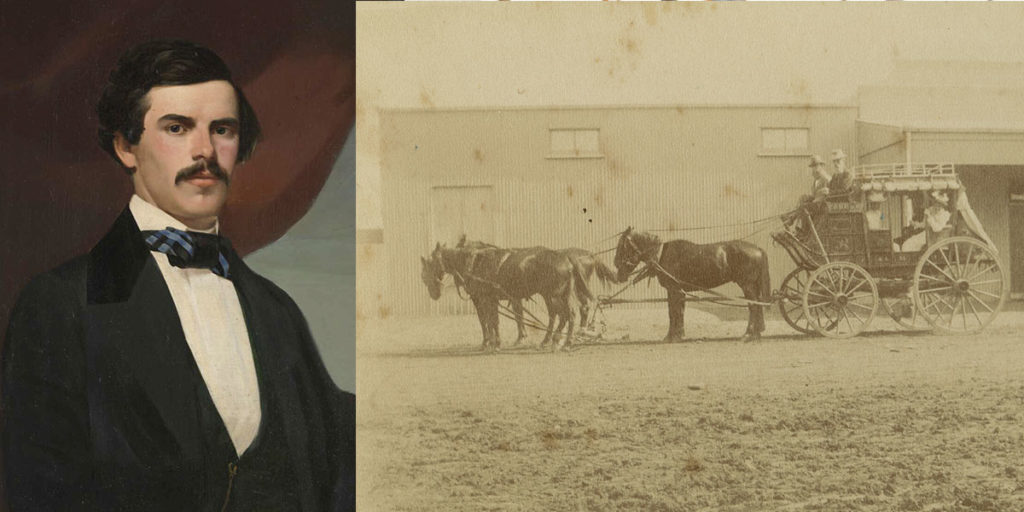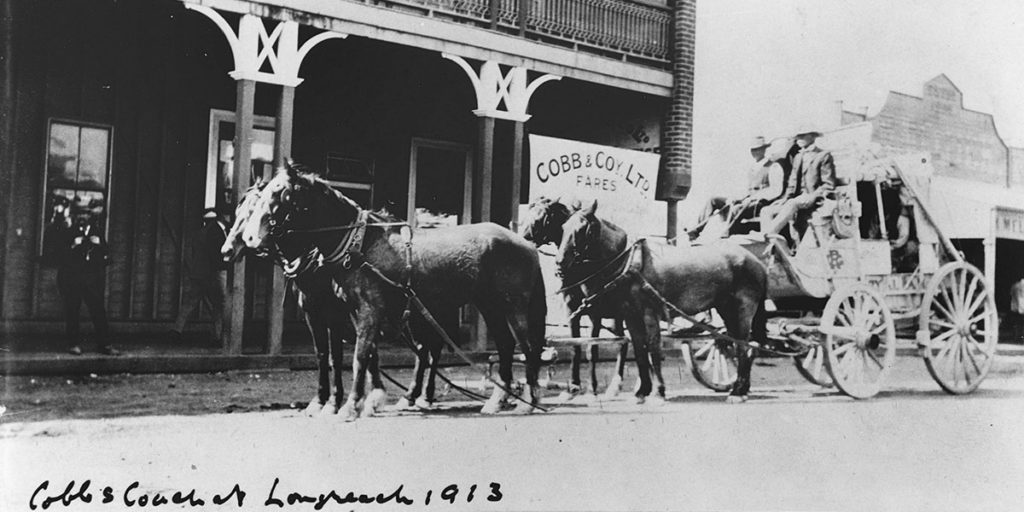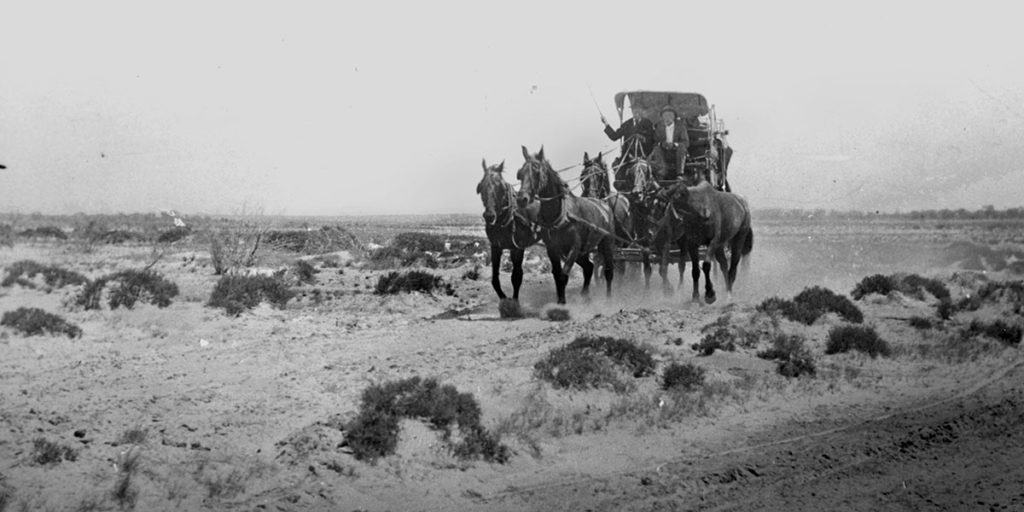1. Cobb & Co was founded by Freeman Cobb with partners John Peck, James Swanton and John Lamber. Cobb only stayed in Australia for three years before returning to his home in America but the stagecoach service continued to bear his name.
Founder Freeman Cobb

2. The first Cobb & Co route was from Melbourne to Port Melbourne in 1853. The first Queensland service, in 1865, was between Brisbane and Ipswich.
3. Stagecoach travel was very expensive – about $2 for a one-day journey in 1860. Today this would be about $400.
4. In the heyday of the business, Cobb & Co would harness up to 6,000 horses every day with 40,000 on call for work at any one time.

5. Feeding these horses required approximately 33 ton (30 tonne) of corn and oats each day. During the drought of 1902, Cobb & Co nearly went broke because of the cost of buying and transporting fodder.
6. Cobb & Co coaches travelled at an average speed of 7 miles (12 km) per hour and covered about 50 miles (80 km) in a day.

7. If a coach could not get up a steep hill, passengers were expected to get out and walk, or even push. If it got bogged, which it often did in the wet season, they had to help dig it out.
8. Passengers were allowed only 14 pounds (6 kilograms) of luggage – less than the cabin bag allowance on flights today.
9. Mail was the most important part of the coaches’ cargo. People in the bush relied on the mail not only for letters but for hundreds of items that could be bought from mail-order catalogues. Their parcels of pots and pans, tools, clothing, lamps and more were wrapped in brown paper and brought by the stagecoach.
10. The last Longreach-Jundah stagecoach ran in January 1922. By then, motor vehicles were starting to take over and the railway was already connecting Longreach to the wider world. Later that year, Qantas ran its first scheduled passenger flight, which was from Longreach to Cloncurry.